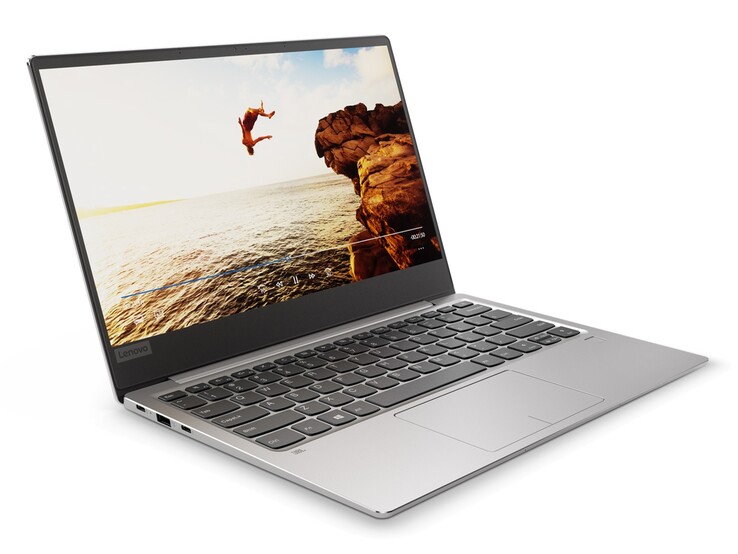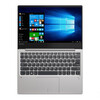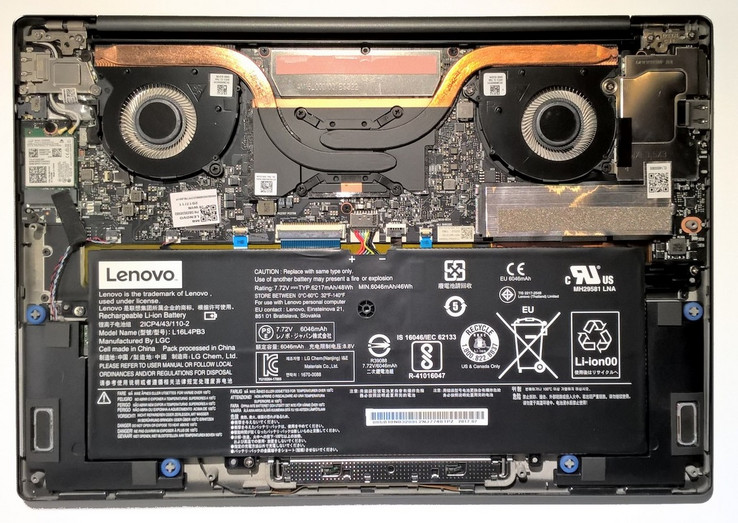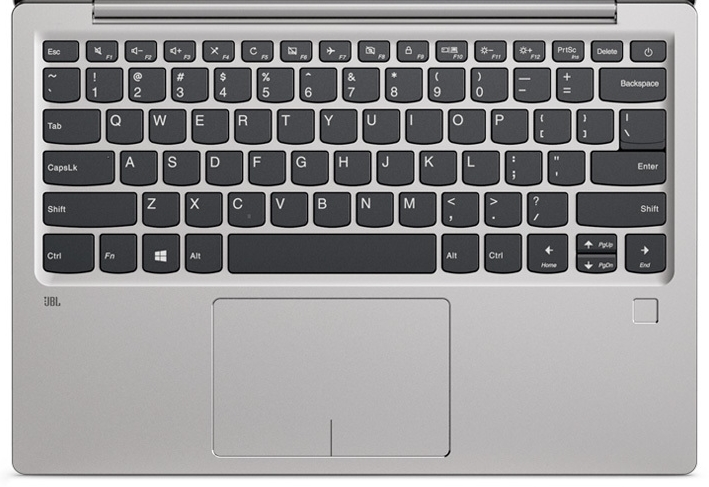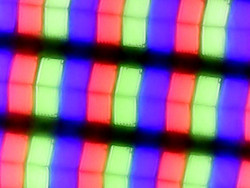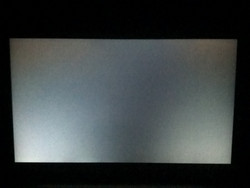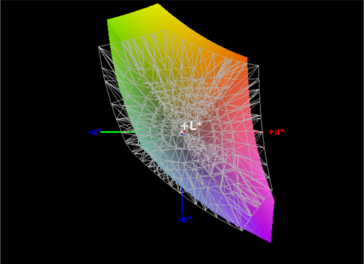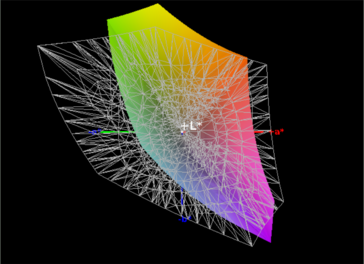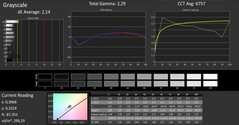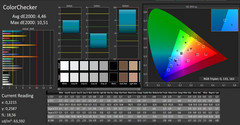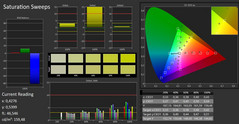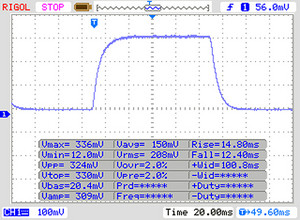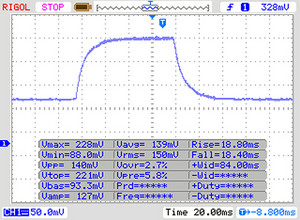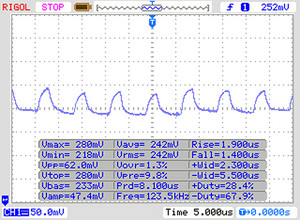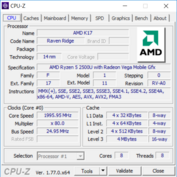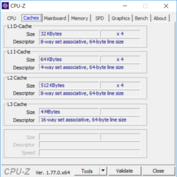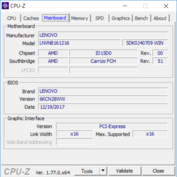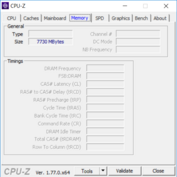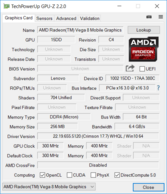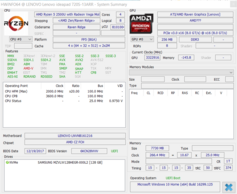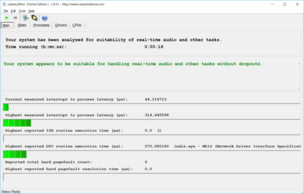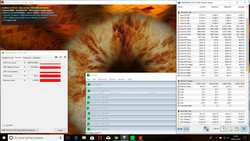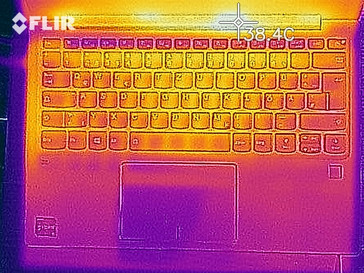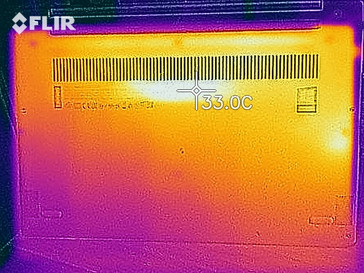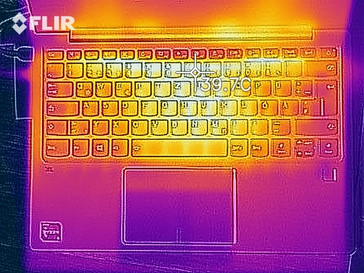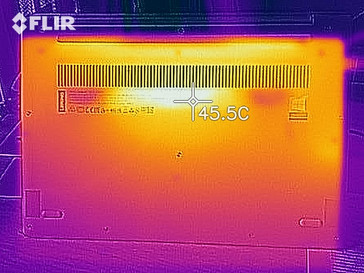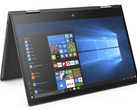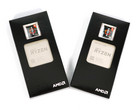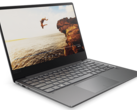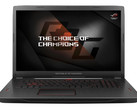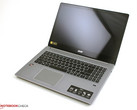Lenovo Ideapad 720S (Ryzen 2500U, Vega 8) Laptop Review

Recently, we have had Lenovo’s IdeaPad 720s equipped with an Intel Core i5-8250U in review, and it turned out to be a robust and lightweight office notebook ideal for everyday use. Today’s review unit is identical at first glance, but houses an AMD Ryzen 5 2500U CPU instead, and we expect overall performance to be equal to, if not better than, the Intel SKU.
In this review, we are pitting the two IdeaPad 720s SKU directly against each other, and to mix things up a bit are also going to include other Ryzen 5 2500U notebooks in our test group: the HP Envy x360 15-bq102ng and the Acers Swift 3 SF315-41-R4W1. In addition, we have decided to include two similarly compact devices at a very similar price point: the Acer Spin 5 SP513-52N-54SF and the ZenBook 13 UX331UN from Asus.
Case
We have already discussed, in depth, the case of the IdeaPad 720s as part of the extensive review of the Intel SKU. For further details, please refer to this review.
Connectivity
Communication
Wi-Fi performance was a big letdown, to say the least. Despite being equipped with a Wi-Fi modem that supports the faster ac standard, we were only able to squeeze a meager 90 MB/s through our antennas. Given that the Intel SKU managed a much faster 300 MB/s, we strongly advise you to make sure to order the correct Wi-Fi modem when purchasing your IdeaPad 720s.
| Networking | |
| iperf3 transmit AX12 | |
| Acer Spin 5 SP513-52N-54SF | |
| Asus ZenBook 13 UX331UN | |
| Lenovo Ideapad 720S-13IKB | |
| Lenovo Ideapad 720S-13ARR | |
| iperf3 receive AX12 | |
| Asus ZenBook 13 UX331UN | |
| Lenovo Ideapad 720S-13IKB | |
| Acer Spin 5 SP513-52N-54SF | |
| Lenovo Ideapad 720S-13ARR | |
Security
The IdeaPad 720s is equipped with a fingerprint reader and a TPM 2.0 chip. The fingerprint reader was not the fastest kid on the block, and it took quite a while to detect and recognize our fingers. In other words, it seemed rather lethargic.
Accessories
Lenovo does not have any model-specific accessories for sale for the IdeaPad 720s. However, a plethora of third-party accessories can be used thanks to the device’s USB 3.1 Type-C port.
Maintenance
As already shown in the review of the Intel-equipped 720s model, the bottom cover can be removed fairly easily. Once removed, one has access to the SSD slot. The photo below shows the Intel SKU.
Warranty
As usual, devices sold in the US get just 12 months of warranty (the exact same notebooks are sold in Europe with 24-months warranty). Optional warranty extensions including pickup and return service, on-site service, or an international warranty are available.
Please see our Guarantees, Return Policies and Warranties FAQ for country-specific information.
Input Devices
An extensive description of both input devices can be found in the review of the 720s Intel SKU. Keyboard and ClickPad were accurate and did not cause any trouble after long and extensive periods of usage. That said the keyboard does take some getting used to.
Display
The 720s came equipped with a frameless IPS display with a resolution of 1920 x 1080. Brightness was only mediocre at best, but in return, the panel’s contrast ratio was very high. Screen bleeding was only noticeable in complete darkness and for entirely black screen images. We did not notice anything during everyday use.
Given that both our 720s review units were equipped with identical panels, our measurements yielded practically identical results. Noticeable differences include brightness, contrast ratio, and black level.
| |||||||||||||||||||||||||
Brightness Distribution: 90 %
Contrast: 1107:1 (Black: 0.27 cd/m²)
ΔE ColorChecker Calman: 4.46 | ∀{0.5-29.43 Ø4.79}
ΔE Greyscale Calman: 2.41 | ∀{0.09-98 Ø5}
83% sRGB (Argyll 1.6.3 3D)
55% AdobeRGB 1998 (Argyll 1.6.3 3D)
60.9% AdobeRGB 1998 (Argyll 3D)
83.3% sRGB (Argyll 3D)
65.2% Display P3 (Argyll 3D)
Gamma: 2.29
CCT: 6757 K
| Lenovo Ideapad 720S-13ARR LG Philips LGD04EF, , 1920x1080, 13.3" | Asus ZenBook 13 UX331UN B133HAN04.9, , 1920x1080, 13.3" | Acer Spin 5 SP513-52N-54SF LC133LF102, , 1920x1080, 13.3" | Lenovo Ideapad 720S-13IKB LG Philips LGD04EF, , 1920x1080, 13.3" | |
|---|---|---|---|---|
| Display | 7% | 12% | -1% | |
| Display P3 Coverage (%) | 65.2 | 65.4 0% | 69.8 7% | 64.3 -1% |
| sRGB Coverage (%) | 83.3 | 93.1 12% | 94.6 14% | 82.3 -1% |
| AdobeRGB 1998 Coverage (%) | 60.9 | 66.4 9% | 69.3 14% | 60.2 -1% |
| Response Times | 9% | -20% | 4% | |
| Response Time Grey 50% / Grey 80% * (ms) | 36 ? | 22.4 ? 38% | 49 ? -36% | 35 ? 3% |
| Response Time Black / White * (ms) | 26 ? | 31.2 ? -20% | 27 ? -4% | 25 ? 4% |
| PWM Frequency (Hz) | 128000 ? | 1000 ? | 131000 ? | |
| Screen | -2% | 6% | -16% | |
| Brightness middle (cd/m²) | 299 | 338 13% | 295 -1% | 335 12% |
| Brightness (cd/m²) | 306 | 321 5% | 276 -10% | 303 -1% |
| Brightness Distribution (%) | 90 | 90 0% | 88 -2% | 85 -6% |
| Black Level * (cd/m²) | 0.27 | 0.35 -30% | 0.27 -0% | 0.46 -70% |
| Contrast (:1) | 1107 | 966 -13% | 1093 -1% | 728 -34% |
| Colorchecker dE 2000 * | 4.46 | 4.2 6% | 2.97 33% | 5.09 -14% |
| Colorchecker dE 2000 max. * | 10.51 | 6.5 38% | 5.67 46% | 11.92 -13% |
| Greyscale dE 2000 * | 2.41 | 3.9 -62% | 3.12 -29% | 3.23 -34% |
| Gamma | 2.29 96% | 2.43 91% | 2.45 90% | 2.18 101% |
| CCT | 6757 96% | 7144 91% | 6676 97% | 6214 105% |
| Color Space (Percent of AdobeRGB 1998) (%) | 55 | 60.4 10% | 62 13% | 54 -2% |
| Color Space (Percent of sRGB) (%) | 83 | 93.1 12% | 94 13% | 82 -1% |
| Total Average (Program / Settings) | 5% /
1% | -1% /
4% | -4% /
-11% |
* ... smaller is better
The amazingly low black level of just 0.27 nits is very noteworthy indeed. For example, the Windows taskbar’s black background is very rich and deep, and combined with the more than decent contrast ratio colors are easily distinguishable. At more than 80% sRGB color space coverage, the display manages to achieve an adequate color representation. Some competitors manage to achieve a better color space coverage, but that should only be relevant for professional photo editing purposes.
Display Response Times
| ↔ Response Time Black to White | ||
|---|---|---|
| 26 ms ... rise ↗ and fall ↘ combined | ↗ 14 ms rise | |
| ↘ 12 ms fall | ||
| The screen shows relatively slow response rates in our tests and may be too slow for gamers. In comparison, all tested devices range from 0.1 (minimum) to 240 (maximum) ms. » 61 % of all devices are better. This means that the measured response time is worse than the average of all tested devices (20.3 ms). | ||
| ↔ Response Time 50% Grey to 80% Grey | ||
| 36 ms ... rise ↗ and fall ↘ combined | ↗ 18 ms rise | |
| ↘ 18 ms fall | ||
| The screen shows slow response rates in our tests and will be unsatisfactory for gamers. In comparison, all tested devices range from 0.165 (minimum) to 636 (maximum) ms. » 49 % of all devices are better. This means that the measured response time is worse than the average of all tested devices (31.7 ms). | ||
Screen Flickering / PWM (Pulse-Width Modulation)
| Screen flickering / PWM detected | 128000 Hz | ≤ 90 % brightness setting | |
The display backlight flickers at 128000 Hz (worst case, e.g., utilizing PWM) Flickering detected at a brightness setting of 90 % and below. There should be no flickering or PWM above this brightness setting. The frequency of 128000 Hz is quite high, so most users sensitive to PWM should not notice any flickering. In comparison: 53 % of all tested devices do not use PWM to dim the display. If PWM was detected, an average of 8163 (minimum: 5 - maximum: 343500) Hz was measured. | |||
Performance
The IdeaPad 720s was equipped with an AMD Ryzen 5 2500U, 8 GB of RAM, and a 128 GB SSD. While this is the only model available in Europe, three different Ryzen models are sold in the US: a base model equipped with a 2500U and a 256 GB SSD for $649; a mid-range model for $100 more that gets you an upgraded 512 GB SSD, and a high-end model for $200 more equipped with a 512 GB SSD, AMD’s Ryzen 7 2700U processor, and Windows 10 Pro. The 720s is also available with Intel processors, and we have had the Core i5-8250U-equipped SKU in review about a month ago. Overall performance was acceptable, and we expect at least the same level of performance of our AMD review unit.
Processor
The Ryzen 5 2500U is a quad-core processor capable of working on up to 8 threads simultaneously. Configurable at TDPs between 12 and 25 W, the CPU seems to be ideally suited for ultraportable light thin laptops. However, the cooling system’s prowess is a deciding factor in the device’s overall performance.
And sadly enough, this is exactly where the IdeaPad 720s falls short. While the first iteration of our Cinebench R15 Multi loop yielded a very good result and measured up to our expectations, the second iteration showed a massive drop. Eventually, the system settled at a level more fitting for a Core i7-7500U. Repeating the Cinebench R15 multi loop yielded the exact same results.
During everyday use, we have noticed a very quick rise in surface temperatures and thus suspect that the cooling system is incapable of dealing with the Ryzen 5 2500U’s heat dissipation leading to unavoidable CPU throttling. Additional benchmarks for AMD’s Ryzen 5 2500U can be found on our CPU benchmark page.
System Performance
As expected, thermal issues plagued the device during our system performance benchmarks as well. The SSD certainly helped to a certain degree but not enough to prevent the IdeaPad's poor, substandard performance in PCMark 8. The IdeaPad 720s with Intel Core i5-8250U processor was much faster than our AMD unit.
| PCMark 8 Home Score Accelerated v2 | 3168 points | |
| PCMark 8 Work Score Accelerated v2 | 3852 points | |
Help | ||
Storage Devices
Both, the Intel and the AMD SKU, are equipped with a Samsung PM961-series SSD. When benchmarked in other systems, our review unit’s 128 GB SSD turned out to be slower than the 256 GB SSD supplied with the Intel SKU. Accordingly, the benchmark results did not surprise us at all.
The IdeaPad’s SSD was fast but unable to keep up with the fastest SSDs currently available. See our HDD/SSD benchmark table for a comparison between the PM961 and other SSDs.
| Lenovo Ideapad 720S-13ARR Samsung PM961 NVMe MZVLW128HEGR | Asus ZenBook 13 UX331UN SanDisk SD8SN8U512G1002 | Acer Spin 5 SP513-52N-54SF Micron 1100 MTFDDAV256TBN | Lenovo Ideapad 720S-13IKB Samsung PM961 MZVLW256HEHP | Average Samsung PM961 NVMe MZVLW128HEGR | |
|---|---|---|---|---|---|
| CrystalDiskMark 3.0 | -3% | 10% | 94% | 15% | |
| Read Seq (MB/s) | 1755 | 430.6 -75% | 462.7 -74% | 1674 -5% | 1560 ? -11% |
| Write Seq (MB/s) | 770 | 424.1 -45% | 439.9 -43% | 1191 55% | 781 ? 1% |
| Read 512 (MB/s) | 723 | 275 -62% | 325.2 -55% | 658 -9% | 525 ? -27% |
| Write 512 (MB/s) | 163.7 | 369.8 126% | 361.9 121% | 852 420% | 173.7 ? 6% |
| Read 4k (MB/s) | 36.4 | 28.04 -23% | 27.52 -24% | 51.8 42% | 40.8 ? 12% |
| Write 4k (MB/s) | 69.5 | 53.5 -23% | 91.6 32% | 114.9 65% | 115.4 ? 66% |
| Read 4k QD32 (MB/s) | 292.4 | 322.9 10% | 247.3 -15% | 349.2 19% | 427 ? 46% |
| Write 4k QD32 (MB/s) | 124.7 | 211.9 70% | 292 134% | 332.2 166% | 154.1 ? 24% |
GPU Performance
Our IdeaPad 720s review unit was equipped with AMD’s Radeon RX Vega 8 GPU, which should in theory offer performance similar to that of an Nvidia GeForce 940MX. Deciding factors are once again the cooling system and the TDP level chosen by the manufacturer.
Unfortunately, the 720s also performed rather poorly in this regard. The abysmal cooling system resulted in graphics benchmark scores only half as high as previously reviewed Ryzen 5 2500U units were able to achieve.
What the Radeon RX Vega 8 is truly capable of can be seen on our GPU benchmark page.
| 3DMark 11 Performance | 1768 points | |
| 3DMark Cloud Gate Standard Score | 6303 points | |
| 3DMark Fire Strike Score | 985 points | |
Help | ||
Gaming Performance
The IdeaPad 720s also failed to meet our gaming performance expectations. While the integrated Vega 8 GPU managed to outperform Intel’s integrated HD Graphics 620 without effort it was unable to keep up with other Ryzen 5 2500U and Vega 8 equipped competitors that managed to squeeze out more FPS from their hardware. In addition, our review unit did not support the fairly common 1366 x 768 resolution.
What AMD’s mobile GPU is truly capable of can be seen on our gaming benchmark page.
| low | med. | high | ultra | |
|---|---|---|---|---|
| BioShock Infinite (2013) | 76.5 | 12.1 | ||
| Thief (2014) | 25.2 | 5.9 | ||
| Rise of the Tomb Raider (2016) | 27.7 | 5.9 |
Emissions
System Noise
Even under load, the IdeaPad’s fans remained unobtrusive and only ever so slightly above ambient noise levels. The fan kicked in early on and did not turn back off afterwards. When switched off, we were able to discern a high-pitched noise when the notebook was connected to mains.
Noise level
| Idle |
| 30.4 / 30.4 / 30.4 dB(A) |
| Load |
| 32.3 / 31.4 dB(A) |
 | ||
30 dB silent 40 dB(A) audible 50 dB(A) loud |
||
min: | ||
Temperature
In stark contrast to the Intel SKU, the AMD SKU already felt pretty warm shortly after boot-up. The fan was spinning constantly even under low load, and surface temperatures rose to more than 30 °C (86 °F). The laptop never got really hot but it remained warm to the touch.
We were reminded of the cooling solution’s inadequacy once more during our stress test. Core temperatures shot up to 70 °C (158 °F) and remained at that level. In return, CPU clock speeds started to suffer significantly and dropped to less than 600 MHz. At the end of the test, the frequency settled at a very low 900 MHz and thus significantly below the CPU’s base clock speed of 1.6 GHz. It is true that our stress test scenario is rarely ever encountered in practice, but remember: even when running our benchmarks the cooling solution already proved to be inadequate and underdesigned. We do thus expect performance loss in scenarios of sustained load.
(+) The maximum temperature on the upper side is 37.9 °C / 100 F, compared to the average of 34.3 °C / 94 F, ranging from 21.2 to 62.5 °C for the class Office.
(+) The bottom heats up to a maximum of 38.2 °C / 101 F, compared to the average of 36.8 °C / 98 F
(+) In idle usage, the average temperature for the upper side is 25.7 °C / 78 F, compared to the device average of 29.5 °C / 85 F.
(+) The palmrests and touchpad are cooler than skin temperature with a maximum of 26.7 °C / 80.1 F and are therefore cool to the touch.
(±) The average temperature of the palmrest area of similar devices was 27.6 °C / 81.7 F (+0.9 °C / 1.6 F).
Speakers
For a detailed description of the IdeaPad's speakers we would like to refer you to our Lenovo IdeaPad 720s with Intel CPU review.
Lenovo Ideapad 720S-13ARR audio analysis
(-) | not very loud speakers (69.7 dB)
Bass 100 - 315 Hz
(-) | nearly no bass - on average 17.6% lower than median
(±) | linearity of bass is average (14.8% delta to prev. frequency)
Mids 400 - 2000 Hz
(+) | balanced mids - only 4.8% away from median
(±) | linearity of mids is average (7.4% delta to prev. frequency)
Highs 2 - 16 kHz
(+) | balanced highs - only 3.9% away from median
(±) | linearity of highs is average (7.5% delta to prev. frequency)
Overall 100 - 16.000 Hz
(±) | linearity of overall sound is average (21.4% difference to median)
Compared to same class
» 52% of all tested devices in this class were better, 9% similar, 40% worse
» The best had a delta of 7%, average was 21%, worst was 53%
Compared to all devices tested
» 59% of all tested devices were better, 7% similar, 34% worse
» The best had a delta of 4%, average was 24%, worst was 134%
Apple MacBook 12 (Early 2016) 1.1 GHz audio analysis
(+) | speakers can play relatively loud (83.6 dB)
Bass 100 - 315 Hz
(±) | reduced bass - on average 11.3% lower than median
(±) | linearity of bass is average (14.2% delta to prev. frequency)
Mids 400 - 2000 Hz
(+) | balanced mids - only 2.4% away from median
(+) | mids are linear (5.5% delta to prev. frequency)
Highs 2 - 16 kHz
(+) | balanced highs - only 2% away from median
(+) | highs are linear (4.5% delta to prev. frequency)
Overall 100 - 16.000 Hz
(+) | overall sound is linear (10.2% difference to median)
Compared to same class
» 7% of all tested devices in this class were better, 2% similar, 91% worse
» The best had a delta of 5%, average was 18%, worst was 53%
Compared to all devices tested
» 4% of all tested devices were better, 1% similar, 94% worse
» The best had a delta of 4%, average was 24%, worst was 134%
frequency diagram (checkboxes selectable/deselectable!)
Energy Management
Power Consumption
Overall, power consumption was similar to other ultraportable Ryzen 5 2500U-based notebooks. In fact, the AMD SKU turned out to be significantly more energy efficient than the Intel SKU. The included 45 W charger is more than amply dimensioned for the IdeaPad 720s.
| Off / Standby | |
| Idle | |
| Load |
|
Key:
min: | |
| Lenovo Ideapad 720S-13ARR R5 2500U, Vega 8, Samsung PM961 NVMe MZVLW128HEGR, IPS, 1920x1080, 13.3" | Lenovo Ideapad 720S-13IKB i5-8250U, UHD Graphics 620, Samsung PM961 MZVLW256HEHP, IPS, 1920x1080, 13.3" | HP Envy x360 15-bq102ng R5 2500U, Vega 8, Samsung PM961 MZVLW256HEHP, IPS, 1920x1080, 15.6" | Acer Swift 3 SF315-41-R4W1 R5 2500U, Vega 8, Intel SSD 600p SSDPEKKW256G7, IPS, 1920x1080, 15.6" | |
|---|---|---|---|---|
| Power Consumption | 8% | -4% | -23% | |
| Idle Minimum * (Watt) | 5.3 | 3.9 26% | 4.8 9% | 7.3 -38% |
| Idle Average * (Watt) | 9 | 7.7 14% | 7 22% | 9.7 -8% |
| Idle Maximum * (Watt) | 12.6 | 10.4 17% | 9.5 25% | 13 -3% |
| Load Average * (Watt) | 37.1 | 33.3 10% | 40.8 -10% | 40.4 -9% |
| Load Maximum * (Watt) | 26.5 | 34 -28% | 44.3 -67% | 42.2 -59% |
* ... smaller is better
Battery Life
Unfortunately, battery life was below average. The IdeaPad ran out of power in our Wi-Fi test after just 3.5 hours. The other AMD notebooks in our test group lasted for at least another 90 minutes.
| Lenovo Ideapad 720S-13ARR R5 2500U, Vega 8, 48 Wh | Lenovo Ideapad 720S-13IKB i5-8250U, UHD Graphics 620, 46 Wh | Acer Swift 3 SF315-41-R4W1 R5 2500U, Vega 8, 48 Wh | HP Envy x360 15-bq102ng R5 2500U, Vega 8, 55.8 Wh | Average of class Office | |
|---|---|---|---|---|---|
| Battery runtime | 72% | 8% | 109% | 170% | |
| Reader / Idle (h) | 11.4 | 17.3 52% | 12.2 7% | 22.3 ? 96% | |
| H.264 (h) | 3.3 | 14.6 ? 342% | |||
| WiFi v1.3 (h) | 3.4 | 10.1 197% | 5.2 53% | 7.1 109% | 12.2 ? 259% |
| Load (h) | 2.2 | 1.5 -32% | 1.4 -36% | 1.851 ? -16% |
Verdict
Pros
Cons
Our review clearly shows that taking an existing notebook design and swapping the Intel CPU for an AMD Ryzen 5 2500U does not cut it. If Lenovo would have spent some time and effort on adapting the cooling solution to the brand-new AMD CPU, the Ryzen-based IdeaPad 720s could have become a true alternative to Intel’s 8th generation Core processors.
The AMD-based IdeaPad 720s is a solid and powerful notebook thwarted by the terribly poor and inadequate cooling solution.
Still, the reviewed AMD SKU of Lenovo’s IdeaPad 720s remains a decent office notebook with enough oomph for everyday office tasks and basic multimedia challenges. We would have expected better performance than offered by the recently reviewed Intel SKU; unfortunately, it fell victim to Lenovo’s failure to adapt the device to AMD’s CPU properly.
Lenovo Ideapad 720S-13ARR
- 03/07/2018 v6 (old)
Mike Wobker




